Top Ways to Leverage Technology to Increase Sales for your eCommerce Business



eCommerce has totally changed how we do business.
Actually, eCommerce has single-handedly disrupted the way business was and has been conducted for centuries by creating a myriad of opportunities for entrepreneurs.
Thanks to eCommerce, there are no boundaries as to who you can buy and sell your product or service from or to.
The world is now your market, and you can pretty much do business from any geographical location.
However, there’s a catch.
For your eCommerce efforts to pay off, you obviously need the right systems in place. Having a fast internet connection is not enough. I mean, it’s good to have one, but it’s not the only thing you need to play in the eCommerce space.
Online business is now becoming big business, and the numbers pretty much speak for themselves.
Retail eCommerce revenues are projected to grow at a rate of 4.88 trillion by 2021. The number of digital buyers is also skyrocketing each year with a projection of 2.14 billion by 2021. If you want your eCommerce company to play a significant part in these statistics, then you must change with the times.
Technology is changing the way businesses run their operations today. Technology has also become more accessible to more people.
It’s changing customer shopping behavior and the work environment. The availability is enabling a competitive digital culture that leads to advantages across many business operations.
Robust technology helps sales teams generate more sales-worthy leads, boost conversion rates, develop long term relationships with customers, enhance customer service, nurture leads, and get prospects to convert.
Most companies today focus on giving the customer a user-friendly and amazing experience. It is, therefore, crucial to adopt new technologies that make this possible. A user-friendly experience for the customer leads to more sales, loyalty, and a greater return on investment.
Using the latest in technology will help you stay competitive. It will also ensure you provide your customers with convenience, relevant products, and quality products.
Technology helps eCommerce companies strengthen relationships with customers and keep them top of mind when they are sales-ready. With technology, you easily learn about the customer, their wants and expectations, and you solve their problems fast.
However, to succeed, you need to adopt a holistic eCommerce marketing strategy that involves both offline and online tactics. Combining both allows you to create awareness for your brand on all the platforms your target audience frequents.
It also helps you provide the right products to consumers at their time of need and make them loyal. Consumers can also start and end their shopping experiences on different platforms. The ease and convenience drive the customers to become repeat customers leading to more sales.
The following are emerging technologies (or older technologies with new approaches) your eCommerce businesses can leverage to increase sales and grow your business:
1. Email Marketing

Email marketing has been helping retailers reach and cater to the needs of their customers for a while now. However, it’s still relevant today. For every 1 dollar spent on email marketing, you get a $44 return on investment.
It’s a direct and effective way of connecting with leads, nurture them and turn them into customers. It helps you connect with the customer from the first point of contact with your brand and throughout their purchase journey.
You can also use email to keep in touch with them after they buy and build a long-lasting relationship.
Email marketing is an effective marketing strategy that helps you send customers and prospects relevant emails. Emails that convert and turn current customers into loyal brand ambassadors.
Here are some statistics to get you started:
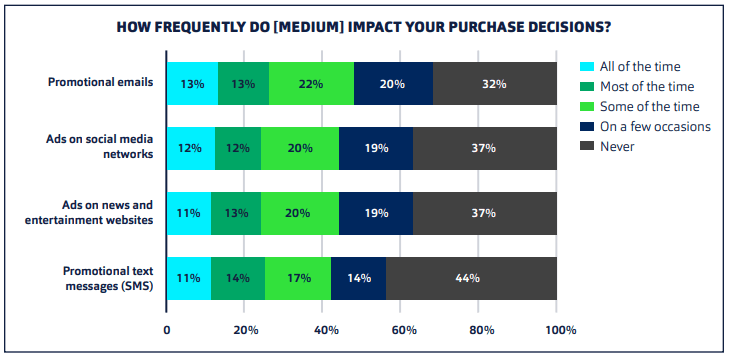
Image Source: Fluent
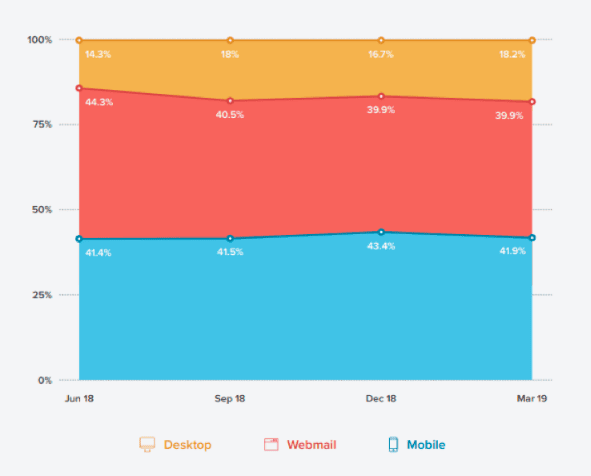
Image Source: Litmus
To get started on email marketing, get a good email marketing service.
You are still not thinking about emailing each customer individually, are you?
Some good ones include MailChimp, Constant Contact, Drip, ConvertKit, GetResponse, HubSpot, and many more.
Segment your email list so that you send relevant emails to targeted customers for higher conversions.
Automating your emails increases your chances of making a sale. An autoresponder series, for example, helps you successfully engage customers, build relationships, and turn them into buyers.
With email marketing, you:
2. Artificial Intelligence

Artificial intelligence continues to embed itself in our lives and is expected to power the future. It’s set to power over 95 percent of all customer interactions by 2025.
It’s also projected that business AI technologies will increase productivity by 40 percent and enable people to be more efficient with their time.
However, how do you use it for eCommerce?
AI can be a great way to understand your customers, provide an enhanced experience, and generate new leads.
Customers will abandon the cart if the products you display are not relevant. With AI, your eCommerce store can improve search results for your customers. They can help customers find matching products or discover complementary products.
Artificial intelligence offers predictive content that allows you to provide customers with content based on their browsing history, interests, and preferences. You can create personalized marketing experiences for your audience. According to PointSource research, with AI, 34 percent of shoppers spend more and 49 percent shop more frequently.
You can generate more sales-worthy leads by gathering accurate data, which helps you make better and informed decisions. Sixty-five percent of businesses adopt artificial intelligence and machine learning to make informed business decisions.
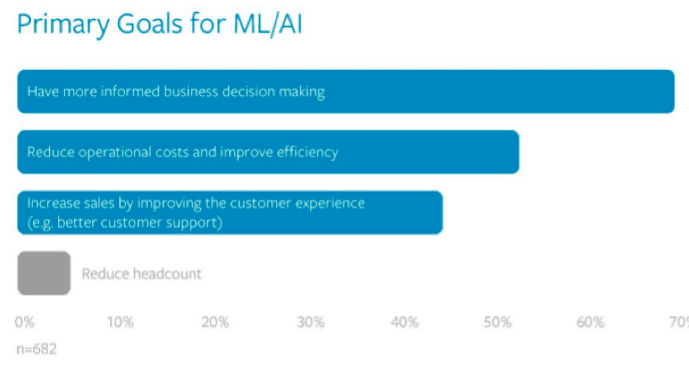
Image Source: MEMSQL
According to research, companies using AI in sales increase their leads by 50 percent, reduce costs by 40-60 percent, and reduce call time by 60-70 percent. AI also allows your sales rep to spend more time closing deals. With artificial intelligence, your sales and marketing team can drive more revenue.
Integrating AI to your CRM allows you to message your customers at the right time using the right platform. The CRM system can then answer customer questions, identify lead generation opportunities, and solve issues.
AI is also enabling multi-channel personalization. It identifies all customer touchpoints with your brand and analyzes these interactions. It then offers your customers a unified view and seamless experiences across platforms.
Chatbots are another AI innovation that’s helping retailers with important responsibilities. Chatbots can provide customer service and automate order processes. They can also integrate with shopping carts.
The top benefits of chatbots, according to consumers, include getting 24-hour service and instant responses. They believe that chatbots provide real-time and on-demand experiences they expect.
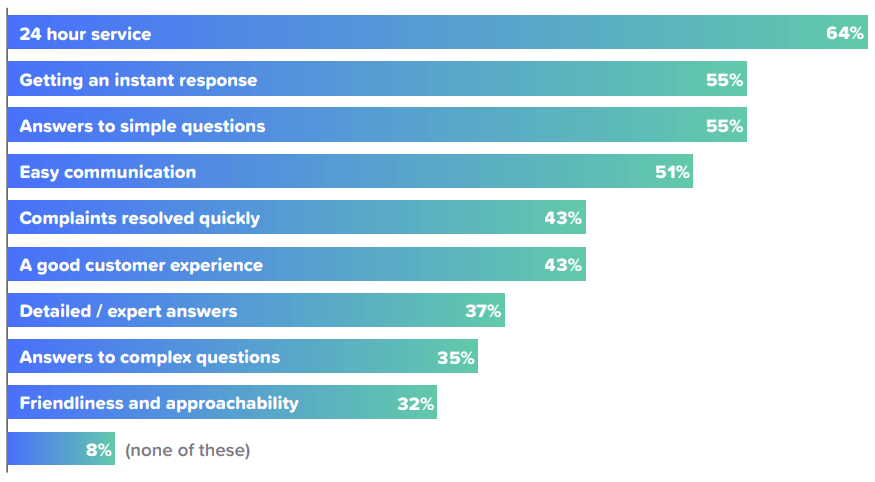
Image Source: Drift
3. The Internet of Things

By 2020, there will be over 30 billion IoT devices. In retail, IoT is revolutionizing, not only customer experiences, but how retail owners and employees work. A McKinsey report estimates that by 2025, IoT will have an economic impact ranging from $410 billion to $1.2 trillion per year in retail.
With IoT, you can get an automated checkout process to encourage customers to purchase products. IoT allows your system to read tags on items a customer finally purchases.
A checkout system totals the items up and uses a mobile app to automatically deduct the cost. McKinsey estimates that by 2025, checkout powered by IoT will reduce the need for cashiers by 75 percent. The retailer will then get $150 billion to $380 billion savings.
IoT allows you to reward frequently returning customers. They receive loyalty discounts when standing next to products or get notifications on their smartphones. For eCommerce retailers, IoT allows you to send customers personalized discounts while in-store. It allows you to tailor discounts to customer preference and helps you maximize conversion rates.
Beacons are another IoT innovation that allows retailers to use location proximity to send alerts to customers. You can send customers discounts, information on special events, and reminders when they are near your shop.
If a customer visits your brick and mortar store, you can alert them of products they liked when they stand near the said products. For example, a customer who liked a certain lipstick online will get a reminder of that same lipstick when they stand at the makeup section.
4. Cognitive Computing

Traditional analytics do not fully exploit the full value of exponentially expanding data. Data grows rapidly in variety, volume, and complexity as the company grows. Many retailers are still grappling with making full use of available data.
However, cognitive computing allows organizations to overcome these limitations.
The traditional system of analyzing data is pre-programmed and rigid. It cannot reason, learn, relate, or interact. With cognitive computing, the systems build knowledge and learn. They have a natural ability to interact with human beings since they understand human language and reason.
Ninety-one percent of retail executives agree that it will disrupt the industry, and 83 percent believe it will critically impact their businesses in the future.
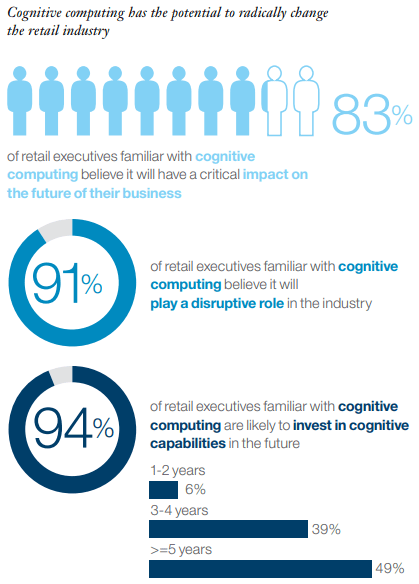
Image Source: IBM
eCommerce companies that want to stand out must leverage cognitive computing insights to offer a personalized experience.
The benefits of cognitive computing include:
5. Interactive Visualization of Products

One of the reasons people are afraid to purchase products, especially clothes and furniture, is not knowing whether they will be a good fit. Will the product be of quality as advertised, and is it exactly what they need?
People relied on ads, word of mouth, and professional reviewers in the past before making a purchase. Today, 55 percent of consumers visit a store before they make a purchase online. They want to touch, see, and feel the product before purchasing.
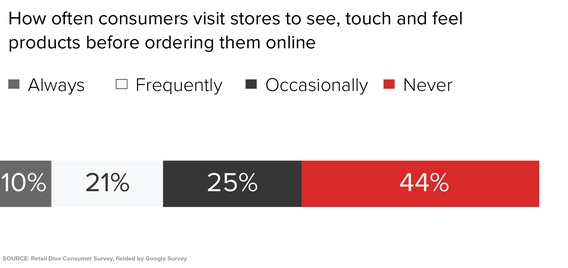
Image Source: Retail Dive
Image Source: Retail Dive
With product visualization, your eCommerce business can create memorable experiences for the customer without a physical location. The eCommerce retailer needs to turn the website into a ‘showroom’ of some sort. Customers can then see, test, and try products before making the purchase.
Product visualization is the art of using images, artwork, and renderings to communicate products to your target market visually. The visual product configuration software allows eCommerce websites to communicate products to customers.
It engages, interacts, and drives the emotions of customers. The interactive visuals used and the aesthetics and color combination influence the customer to make a purchase.
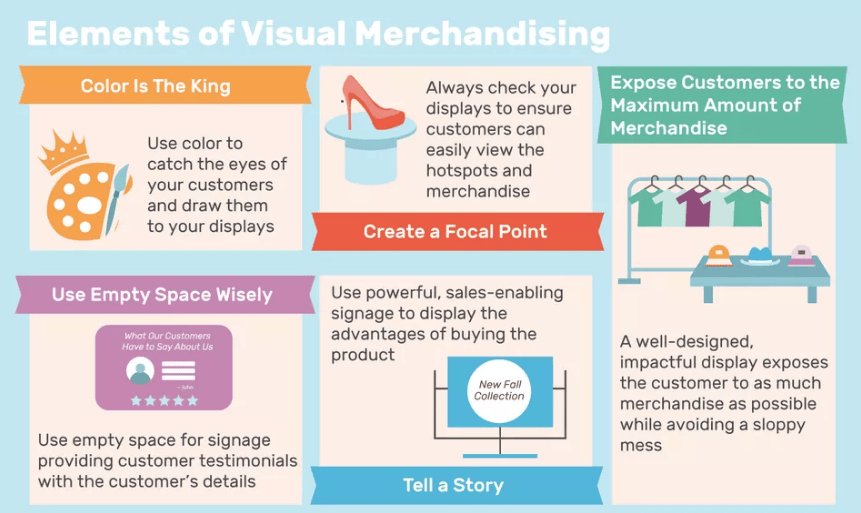
Image Source: The Balance
3D modeling allows you to change the face of the product. It has advanced and amazing features that give the consumer an authentic feel of the product. You can use the high resolution to cover different angles of the product. The customer gets a clear view which they can zoom in or out for clarity.
Use 3D images on a suitable background for your catalogs and when promoting products on the website. Research shows that 95 percent of customers prefer interactive 3D view to playback video.
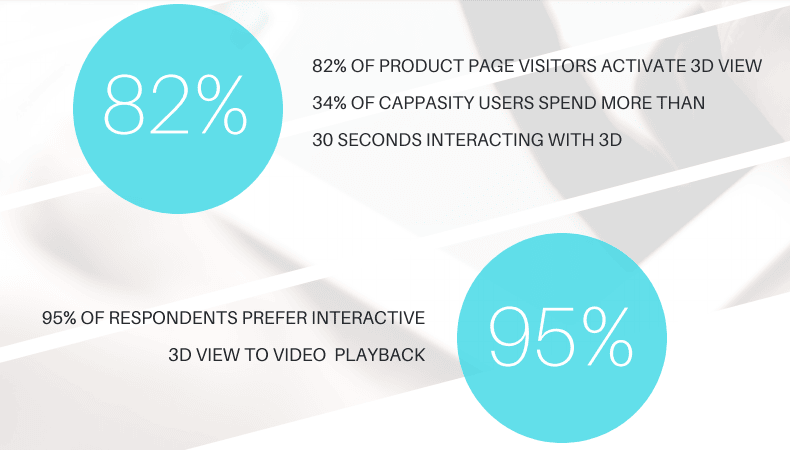
Image Source: Capassity
A 360-degree product view provides the customer with rotating images to give them a real-life feeling of the product. The image captures every angle of the product.
Visually interactive images virtually place the image in a real-life environment. They demonstrate the product in various styles with different backgrounds. The customer can change the color, shape, and lighting to get a better view of what they will be getting.
The customer can also insert other elements in the background to check whether the item will be suitable for their needs. Think about it this way: images are already the most common type of content used on social media. Can you imagine the revolution interactive images will bring about?
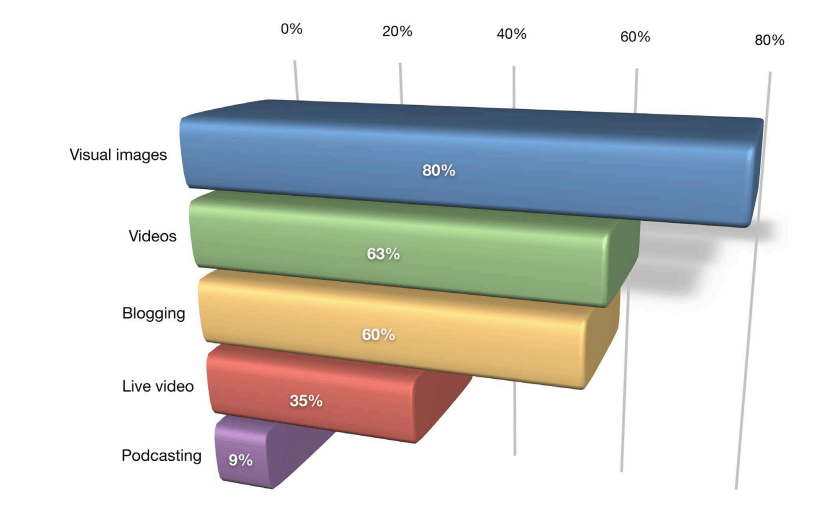
Image Source: Social Media Examiner
Virtual reality and augmented reality are two other technologies allowing retailers to improve customer experience. Virtual reality uses headsets aimed at eliminating all other stimuli for the consumer.
The consumer gets a digitalized view of products they want to purchase. With VR, customers can get inspired by different products, colors, and styles in real-life settings. Augmented reality enhances the real-life surrounding so that customers visualize the products from the comfort of their homes.
Deploying both AR and VR seamlessly into the shopping experience will enhance the bottom-line since the customer can see and visualize the product in their house or on their bodies. They will have an immersive shopping experience.
Converse offers its customers the chance to customize their shoes. The customer builds their design before ordering using an interactive process. It’s an exciting experience, and the customer is assured of the product look and feel they will be getting since they helped build it.
6. Convenient Checkout and Delivery Technology

The customer always wants convenience. According to research, most of the cart abandonment happens due to either a long or a complicated checkout process.
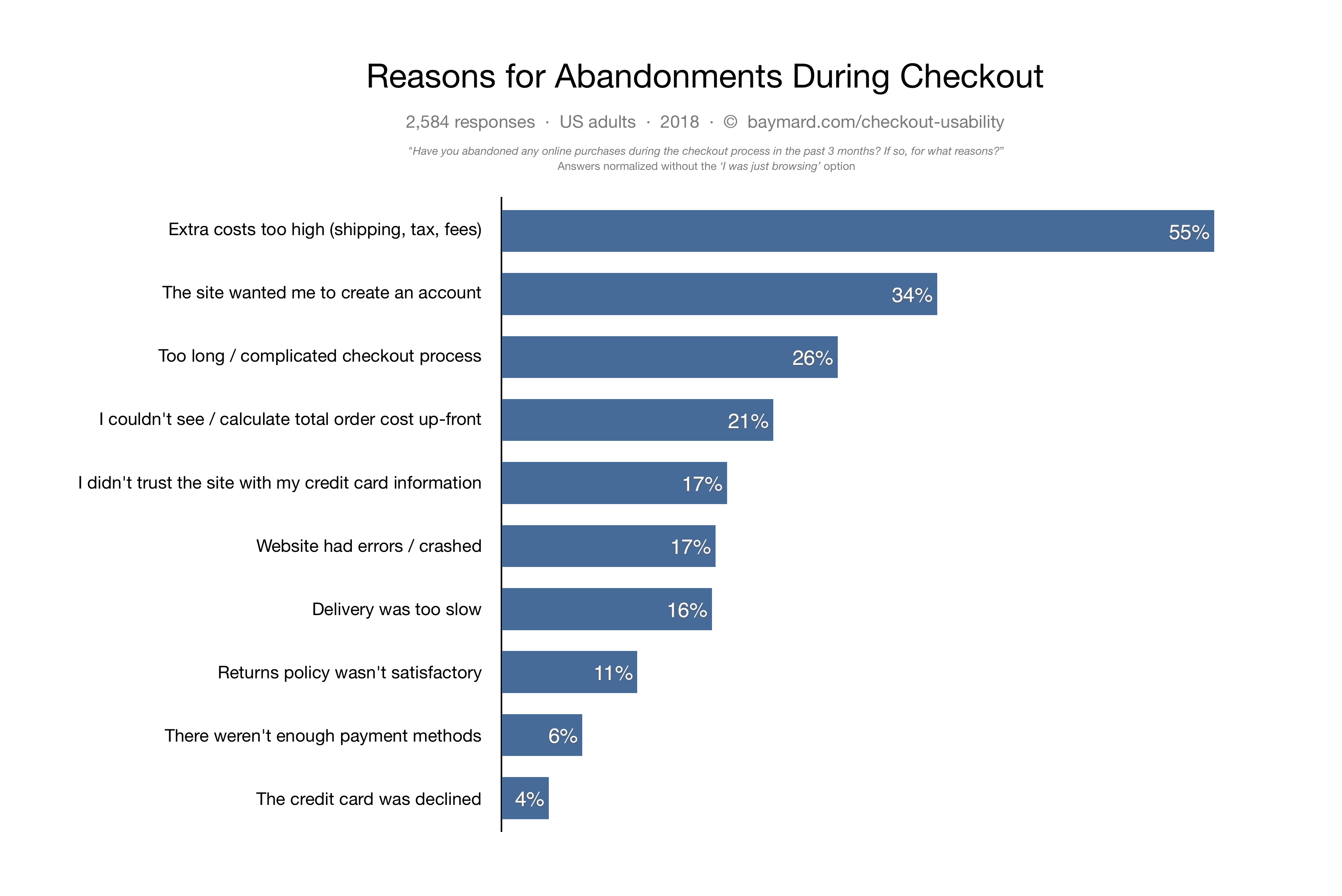
Image Source: Baymard Institute
Most of these issues can be sorted using the right technology. Your eCommerce company can gain a 35.26 percent increase in conversion rates by improving the checkout process.
Check out tips to maximize purchase opportunities:
Consumers also want fast deliveries with same-day deliveries being the most preferred. Others would prefer if the retailer delivers in two hours.
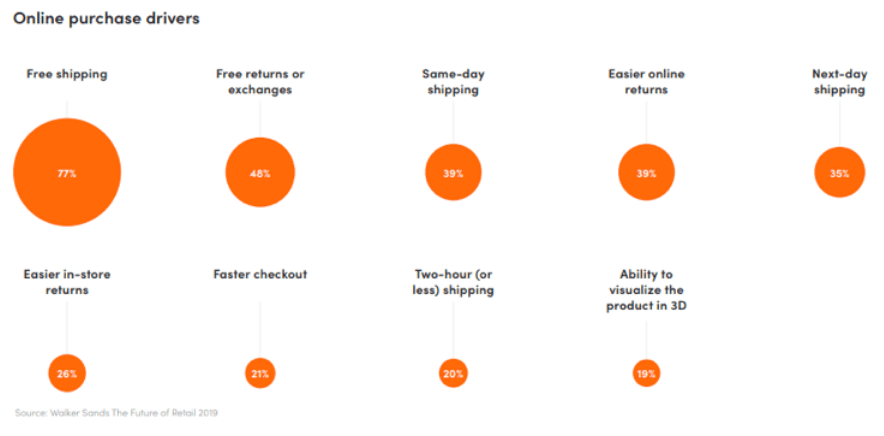
Image Source: Walker Sand
Companies like Amazon have a click and collect service, where in partnership with supermarkets, a customer can pick up their product. Customers get their products when they need them.
In Europe, customers receive their orders in their car trunks. The technology for drone services is also almost a reality, and customers will soon have their products dropped to their locations by drones. It’s all about thinking outside the box and ensuring that your customers don’t have to wait for days before they can receive their orders.
Conclusion: top ways to leverage technology to increase sales for your eCommerce business.

Customers expect more from their online shopping. Those that fail to offer seamless and exceptional experiences will suffer in terms of profits. As an eCommerce retailer, it’s time to ask yourself whether you always want to play catch up, or use technology to grow your business.
Emerging technology presents numerous opportunities for eCommerce businesses to make a customer shopping experience seamless and convenient. A convenient and exceptional experience leads to more sales, profit, and ultimately, a greater return on investment.
You can stay ahead of the curve and become the consumers’ choice if you provide them with relevance, value, and convenience. The right technology can help you do all that.v